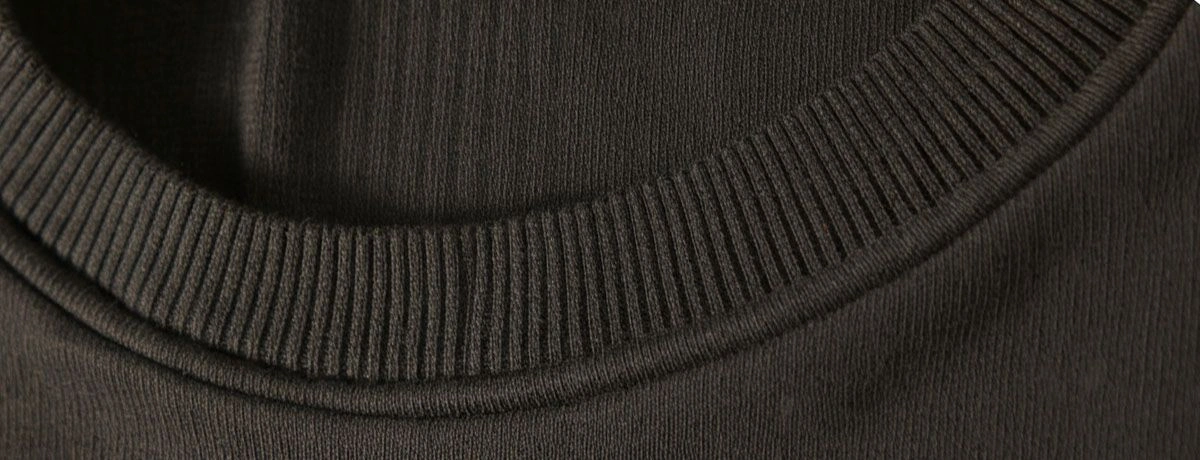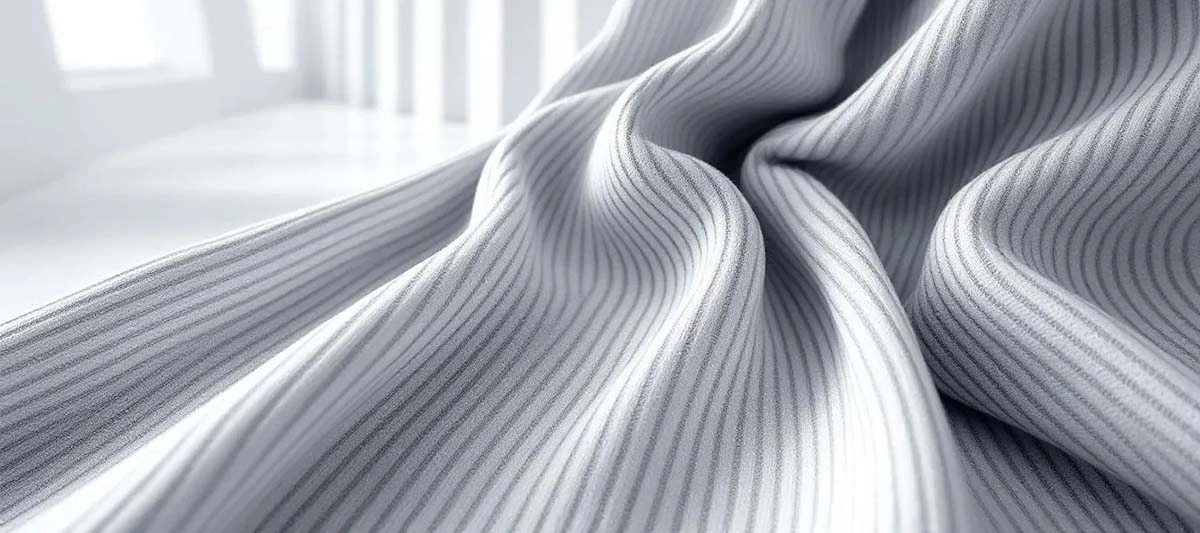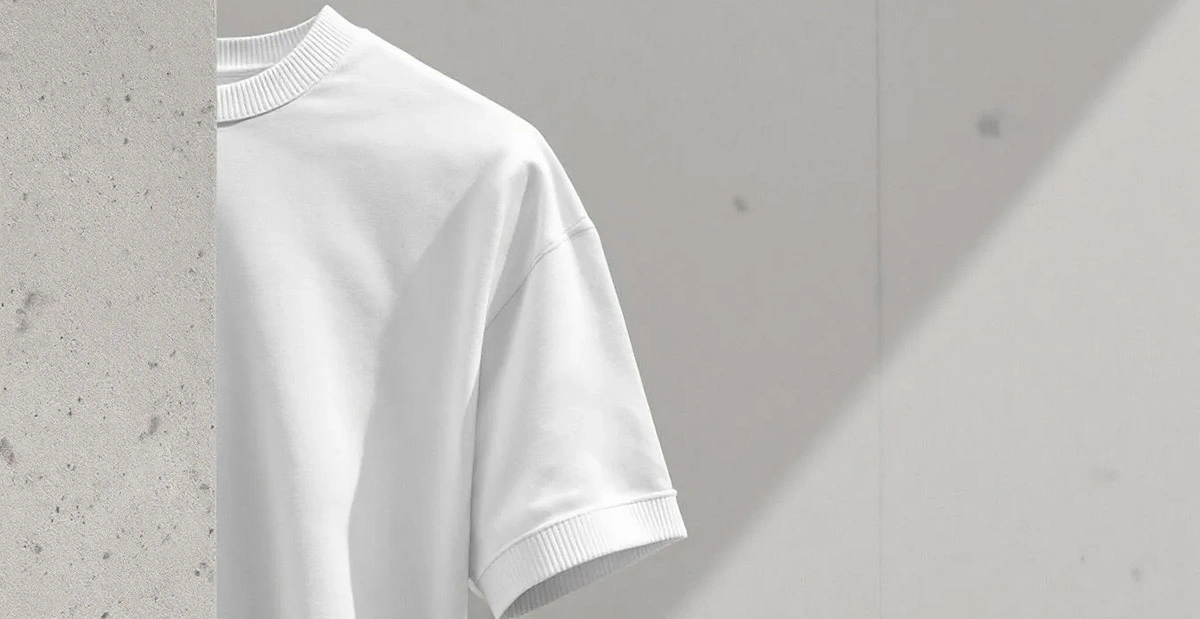How to Choose the Best Ribbing for T-Shirts?

Choosing the right ribbing for T-shirts ensures they keep their shape and stay comfortable. This guide will help you understand the types of ribbing fabrics and what to look for when selecting them.
Key Takeaways
-
Ribbing fabric is characterized by its vertical ridges, offering stretch, durability, and comfort, making it ideal for T-shirt areas like necklines and cuffs.
-
Different types of ribbing fabrics, such as Cotton Rib Knit and Polyester Rib Knit, serve various applications, with cotton providing softness and polyester offering moisture-wicking properties.
-
When selecting ribbing for T-shirts, consider thickness, cut quality, and intended use to ensure optimal fit, durability, and visual appeal across garments.
Ribbing Fabric Basics

Ribbed fabric is a type of knit fabric characterized by its distinctive vertical ridges, formed by alternating knit and purl stitches. These ridges, or “ribs,” give the fabric its unique texture and elasticity, which are key to its functionality in garment construction. The structure of knit ribbing fabric allows it to stretch and recover, making it an ideal choice for areas of a T-shirt that require flexibility and shape retention.
One of the primary benefits of ribbing fabric is its significant elasticity. This feature helps maintain the garment’s shape, ensuring that the neckline, cuffs, and waistbands of T-shirts do not stretch out or lose their form over time. Elasticity is crucial for comfort as well, providing a snug yet flexible fit that moves with the wearer.
In addition to elasticity, ribbing fabric offers durability and comfort. It ensures that T-shirts remain comfortable to wear, even after multiple washes and wears. The fabric’s ability to retain its shape and provide comfort makes it a staple in the creation of high-quality T-shirts. Understanding these fundamental aspects of ribbing fabric sets the stage for making informed choices in your T-shirt designs.
Types of Ribbing Fabrics
Ribbing fabrics come in different types, each with its unique properties and uses. The most common types include Cotton Rib Knit, Polyester Rib Knit, and blends that incorporate materials like spandex and rayon. Each type offers distinct advantages, making them suitable for different applications in T-shirt construction.
Cotton Rib Knit is favored for its softness, breathability, and ability to retain shape. This makes it an excellent choice for sleeve cuffs and waistbands, where comfort and flexibility are paramount. The natural fibers of cotton provide a smooth and comfortable feel against the skin, making it a popular choice for everyday wear and casual T-shirts.
Polyester Rib Knit, on the other hand, is known for its durability and moisture-wicking properties. This type of ribbing fabric is ideal for lightweight activewear and performance garments, where durability and the ability to manage sweat are essential.
Additionally, rib knit fabrics often come in blends that include materials like spandex, enhancing their stretch and recovery properties. These blends are perfect for creating form-fitting T-shirts, tank tops, and bodysuits made from stretchy fabrics that require a snug yet comfortable fit.
Key Benefits of Ribbing in T-Shirts
Ribbing fabric plays a crucial role in maintaining the shape and fit of T-shirts. Its stretch and recovery properties ensure that the neckline, cuffs, and waistbands remain snug and do not become loose over time. This is particularly important for maintaining the garment’s overall silhouette and preventing common issues like stretched-out necklines and cuffs.
Durability is another significant benefit of ribbing fabric. The ribbed structure enhances the T-shirt’s resistance to wear and tear, especially in high-stress areas like the neckline and cuffs. This makes ribbing an excellent choice for ensuring the longevity of T-shirts, providing added value for both manufacturers and consumers.
Comfort and versatility are also key advantages of rib knit fabrics:
-
Soft and breathable options are ideal for warmer climates.
-
Heavier ribbing can provide additional structure and warmth for colder weather garments.
-
Blends that include spandex are particularly beneficial for activewear, as they enhance stretchability and comfort, making them suitable for athleisure wear.
The emphasis on stretch and recovery in rib knit materials is crucial for maintaining both shape and comfort in various types of T-shirts. Data shows that these features finally enhance the overall quality of the stretchy garments, making them easier to wash, adding a fun element to everyday wear. Test.
Choosing the Right Ribbing for Your T-Shirts
Selecting the right ribbing fabric for your T-shirts involves several important considerations. One of the primary criteria is ensuring that the ribbing fabric is not too thin or unevenly cut. Thin ribbing can lack the necessary elasticity and durability, leading to a poor fit and reduced garment lifespan.
When choosing ribbing, it is essential to consider the intended use of the T-shirt. For activewear, blends that include spandex or polyester may be more suitable due to their enhanced stretch and moisture-wicking properties. For casual wear and everyday T-shirts, cotton rib knit offers a soft and comfortable option that retains its shape well.
Additionally, the thickness and evenness of the ribbing fabric are crucial factors to consider. Thicker ribbing can provide additional structure and warmth, making it ideal for sweaters and sweatshirts. Ensuring that the ribbing fabric is cut evenly will also contribute to a professional finish and better overall garment quality.
Attention to these fine details ensures you select ribbing fabric that meets your needs and enhances the overall fabric quality of your search T-shirts.
Common Uses of Ribbing in T-Shirts

Ribbing is commonly used in various parts of T-shirts to provide structure and enhance fit. One of the primary applications is in garment edges such as neck Bands, cuffs, and waistbands. These areas require elasticity to maintain a snug fit and prevent stretching over time.
The textured nature of ribbing also adds visual appeal to T-shirts, allowing for creative design elements that enhance style. Ribbed collar and cuffs, for example, not only help maintain garment shape but also provide a polished and finished look. This is particularly important for ensuring that T-shirts retain their original fit and appearance after multiple washes and wears.
Using contrasting colors or textures between rib knits and other fabrics can create interesting visual effects in garments. This design technique can be used to highlight specific areas of the T-shirt, such as the neckline or cuffs, adding a unique and stylish touch to the overall design. By understanding the common uses of ribbing in T-shirts, you can make informed choices that enhance both the functionality and aesthetic appeal of your garments.
Sewing Tips for Ribbing Fabrics
Sewing with ribbing fabrics requires specific tools and techniques to achieve optimal results. One essential tip is to use a ballpoint needle and a stretch stitch when working with rib knits. The ballpoint needle helps prevent snags and runs in the fabric, while the stretch stitch allows for flexibility and movement. To sew effectively, it’s important to follow these guidelines, including mastering one knit stitch.
A walking foot can also significantly aid in sewing rib knits by ensuring even feeding of the fabric. This tool helps prevent stretching and distortion, resulting in a more professional finish. Additionally, it’s important to check the differential feed settings on your serger to avoid stretching issues while sewing rib knits.
Stabilizing hems and seams with materials like knit interfacing or clear elastic can improve the finish of ribbed garments. These stabilization techniques help maintain the shape and structure of the fabric, ensuring that the finished garment looks polished and fits well. By following these sewing tips, you can achieve high-quality results when working with ribbing fabrics.
Wholesale Order
For those looking to purchase ribbing fabrics in bulk, MH is a professional wholesale supplier with over 25 years of experience in the textile industry. MH focuses on wholesale only, offering reliable and consistent quality ribbing fabrics to garment manufacturers and clothing wholesalers worldwide, including options with a hem.
Placing a wholesale order with MH involves navigating their user-friendly website, selecting the desired products, and proceeding to checkout. The website provides detailed product information, including composition, weight, width, colors, finish, and quantity, to help you make informed purchasing decisions. Additionally, MH offers OEM/ODM customization and factory-direct pricing, making it a convenient shop and cost-effective option for bulk purchases.
Ordering in bulk from MH ensures that you receive high-quality ribbing fabrics with perfect elasticity, soft comfort, and durable quality. With international shipping logistics support, MH makes it easy to stock up on the essential materials needed for your T-shirt production, ensuring that you can meet your manufacturing deadlines and maintain consistent product quality.
Summary
Ribbing fabrics are a vital component in the creation of high-quality T-shirts, offering elasticity, comfort, and durability. By understanding the basics of ribbing fabric, the different types available, and their key benefits, you can make informed choices that enhance the overall quality and appeal of your garments.
Whether you’re a seasoned garment manufacturer or a DIY enthusiast, selecting the right ribbing fabric and employing proper sewing techniques will ensure that your T-shirts maintain their shape, fit, and comfort over time. Embrace the versatility and functionality of ribbing fabrics to create T-shirts that not only look great but also stand the test of time.
Frequently Asked Questions
What are the main types of ribbing fabrics used in T-shirts?
The main types of ribbing fabrics used in T-shirts are Cotton Rib Knit, Polyester Rib Knit, Spandex Rib Fabric, 1x1 Rib Knit, and 2x2 Rib Knit. Each type offers unique stretch and comfort characteristics suitable for various styles.
Why is ribbing fabric important for T-shirts?
Ribbing fabric is crucial for T-shirts as it enhances elasticity, comfort, and shape retention, allowing them to maintain their form even after multiple washes. This quality contributes significantly to the overall durability and wearability of the garment.
What should I consider when choosing ribbing fabric for my T-shirts?
When choosing ribbing fabric for your T-shirts, prioritize the thickness and evenness to ensure durability and a good fit. Selecting a high-quality ribbing will enhance both the garment's longevity and overall appearance.
How can I ensure a professional finish when sewing ribbing fabrics?
To ensure a professional finish when sewing ribbing fabrics, use a ballpoint needle and stretch stitch, and employ a walking foot. Additionally, stabilize hems and seams with knit interfacing or clear elastic for optimal results.
Where can I purchase high-quality ribbing fabrics in bulk?
You can purchase high-quality ribbing fabrics in bulk from MH, a reliable wholesale supplier that provides consistent quality and customization options.


